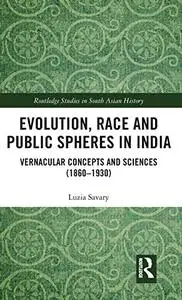Evolution, Race and Public Spheres in India: Vernacular Concepts and Sciences (1860-1930) (Routledge Studies in South Asian History) by Luzia Savary
2019 | ISBN: 1138541842, 0367786621 | English | 178 pages | PDF | 8.5 MB
2019 | ISBN: 1138541842, 0367786621 | English | 178 pages | PDF | 8.5 MB
This book provides an in-depth exploration of South Asian readaptations of race in vernacular languages. The focus is on a diverse set of printed texts, periodicals and books in Hindi and Urdu, two of the major print languages of British North India, written between 1860 and 1930.
Imperial raciology is a burgeoning field of historical research. So far, most studies on race in the British Empire in South Asia have concentrated on the writings of Western-educated elites in English. The range of Hindi and Urdu sources analyzed by the author provides a more varied and complex picture of the ways in which South Asians reinterpreted racial concepts, thereby highlighting the importance of scrutinizing the vernacular dimensions of global entanglements. Part I of the book centers on the debates on "civilization" and "civility" in Hindi and Urdu periodicals, travelogues and geography books as well as Hindi literature on caste. It asks if and in what respect the discussions changed when authors appropriated racial concepts. Part II revolves around the "science" of eugenics. It scrutinizes more popular genres, namely, early twentieth century advisory literature on "fit reproduction." It highlights how the knowledge promoted there was different from "eugenics" as the (mainly English-writing) founders of the Indian eugenic movements endorsed it.
A fascinating analysis of the ways in which colonized elites have adopted and readapted racial concepts and theories, this book will be of interest to academics in the fields of Modern South Asian History, History of Science, Critical Race Studies and Colonial and Imperial History.



